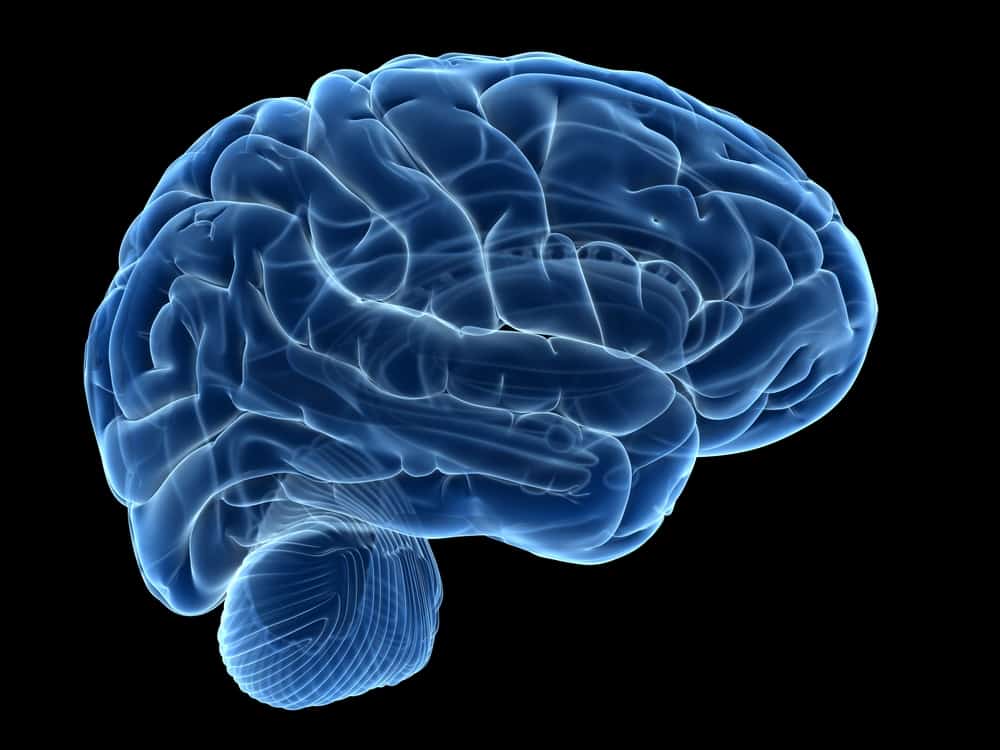
Overview
First identified in 2007 by Dr. Joseph Dalmau, anti-NMDA receptor encephalitis is an auto-immune disease where antibodies attack the NMDA receptors in the brain (specifically the GluN1 subunit), causing a litany of symptoms due to the disruption in signals from the brain and swelling in brain tissue.
NMDA stands for N-methyl-D-aspartate, and anti- indicates that it’s an autoimmune response in the body. Encephalitis means swelling in the brain, causing several neurological symptoms, including behavioral changes, seizures, and coma.
NMDA receptors are responsible for the processes of learning and memory, and are located in neurons in the brain. NMDA receptors are also involved in other neurological disorders, including Alzheimer’s and depression.
Anti-NMDA receptor encephalitis is still quite difficult to identify from other psychiatric disorders, but most commonly occurs in children and young adults and most often in women. It is not yet known what causes it, but environmental and genetic triggers are suspected to be involved.
NMDA stands for N-methyl-D-aspartate, and anti- indicates that it’s an autoimmune response in the body. Encephalitis means swelling in the brain, causing several neurological symptoms, including behavioral changes, seizures, and coma.
NMDA receptors are responsible for the processes of learning and memory, and are located in neurons in the brain. NMDA receptors are also involved in other neurological disorders, including Alzheimer’s and depression.
Anti-NMDA receptor encephalitis is still quite difficult to identify from other psychiatric disorders, but most commonly occurs in children and young adults and most often in women. It is not yet known what causes it, but environmental and genetic triggers are suspected to be involved.
Signs and Symptoms
Anti-NMDA receptor encephalitis can develop over weeks or months with symptoms increasing in severity during that time and requiring hospitalization.
While often diseases present with many symptoms and a patient could experience only some of them, people who develop anti-NMDA receptor encephalitis typically present with nearly all of the symptoms by the time it’s diagnosed. In 90% of diagnosed cases, patients experience severe psychiatric/behavioral symptoms.
Symptoms include:
Changes in behavior, including paranoia, hallucinations, and agitation Worsening memory Difficulty speaking Problems with cognition (thinking, learning, etc.) Seizures Abnormal physical movement Altered autonomic functions (breathing and heart rate) Catatonia
When left undiagnosed and untreated, anti-NMDA receptor encephalitis can ultimately be fatal.
While often diseases present with many symptoms and a patient could experience only some of them, people who develop anti-NMDA receptor encephalitis typically present with nearly all of the symptoms by the time it’s diagnosed. In 90% of diagnosed cases, patients experience severe psychiatric/behavioral symptoms.
Symptoms include:
Changes in behavior, including paranoia, hallucinations, and agitation Worsening memory Difficulty speaking Problems with cognition (thinking, learning, etc.) Seizures Abnormal physical movement Altered autonomic functions (breathing and heart rate) Catatonia
When left undiagnosed and untreated, anti-NMDA receptor encephalitis can ultimately be fatal.
Diagnosis
While anti-NMDA receptor encephalitis remains difficult to diagnose, Dr. Dalmau and his colleagues created an acronym to help identify diagnostic clues when assessing a patient experiencing psychiatric symptoms that have come on suddenly.
SEARCH for NMDAR-A covers the criteria:
Following this diagnosis criteria, anti-NMDA receptor encephalitis may be more easily diagnosed, and diagnosed more quickly.
SEARCH for NMDAR-A covers the criteria:
- Sleep dysfunction
- Excitement
- Agitation
- Rapid onset
- Child and young adult predominance
- History of psychiatric disease absent
- Fluctuating catatonia
- Negative and positive symptoms
- Memory deficit
- Decreased verbal output
- Antipsychotic intolerant
- Rule out neuroleptic malignant syndrome (reaction to neuroleptic medications presenting with some similar symptoms)
- Antibodies (and additional testing, including MRI, CSF studies, and electroencephalogram)
Following this diagnosis criteria, anti-NMDA receptor encephalitis may be more easily diagnosed, and diagnosed more quickly.
Treatment & Recovery
Treatment can vary depending on the specific case and the patient, but typically includes steroids, plasma exchange, intravenous immunoglobulin (extracted from the plasma in blood), and further immunotherapy medications.
If there is a tumor present, surgery and treatment on the tumor can help relieve symptoms. Supportive care with psychiatric treatment can also prove helpful.
The recovery can take months and, rarely, some patients experience dramatic recovery within the first few weeks which may indicate a different underlying condition.
The most severe symptoms typically resolve first but the behavioral and cognitive symptoms can take much longer to resolve, lasting up to a year or two in some patients.
If there is a tumor present, surgery and treatment on the tumor can help relieve symptoms. Supportive care with psychiatric treatment can also prove helpful.
The recovery can take months and, rarely, some patients experience dramatic recovery within the first few weeks which may indicate a different underlying condition.
The most severe symptoms typically resolve first but the behavioral and cognitive symptoms can take much longer to resolve, lasting up to a year or two in some patients.
Sources and More Information
Medscape, “Anti-NMDA Receptor Encephalitis or Primary Psychiatric Disorder?” https://www.medscape.com/viewarticle/929796
“Encephalitis” https://emedicine.medscape.com/article/791896-overview
“Intravenous Immunuglobulin” https://emedicine.medscape.com/article/210367-overview
NPR, “A Young Report Chronicles Her ‘Brain On Fire’” https://www.npr.org/2012/11/14/165115921/a-young-reporter-chronicles-her-brain-on-fire
OHSU, “Puzzling brain disease could now be better diagnosed, treated” https://news.ohsu.edu/2019/07/10/puzzling-brain-disease-could-now-be-better-diagnosed-treated
Perelman School of Medicine – University of Pennsylvania, “Anti-NMDAR Encephalitis” https://www.med.upenn.edu/autoimmuneneurology/nmdar-encephalitis.html
UC Santa Barbara – The Current, “Brain on Fire” https://www.news.ucsb.edu/2019/019546/brain-fire
U.S. National Library of Medicine, National Institutes of Health – PMC, “To Hell and Back Review: Brain on Fire: My Month of Madness” https://www.ncbi.nlm.nih.gov/pmc/articles/PMC3704309/
“Encephalitis” https://emedicine.medscape.com/article/791896-overview
“Intravenous Immunuglobulin” https://emedicine.medscape.com/article/210367-overview
NPR, “A Young Report Chronicles Her ‘Brain On Fire’” https://www.npr.org/2012/11/14/165115921/a-young-reporter-chronicles-her-brain-on-fire
OHSU, “Puzzling brain disease could now be better diagnosed, treated” https://news.ohsu.edu/2019/07/10/puzzling-brain-disease-could-now-be-better-diagnosed-treated
Perelman School of Medicine – University of Pennsylvania, “Anti-NMDAR Encephalitis” https://www.med.upenn.edu/autoimmuneneurology/nmdar-encephalitis.html
UC Santa Barbara – The Current, “Brain on Fire” https://www.news.ucsb.edu/2019/019546/brain-fire
U.S. National Library of Medicine, National Institutes of Health – PMC, “To Hell and Back Review: Brain on Fire: My Month of Madness” https://www.ncbi.nlm.nih.gov/pmc/articles/PMC3704309/

